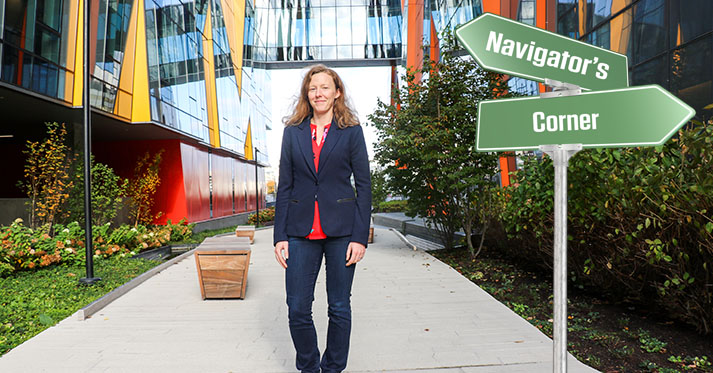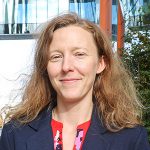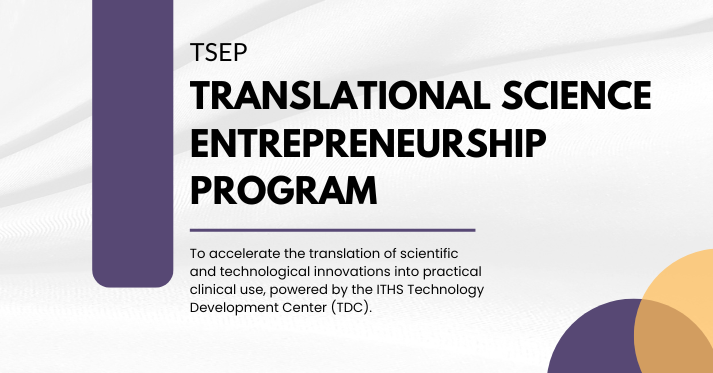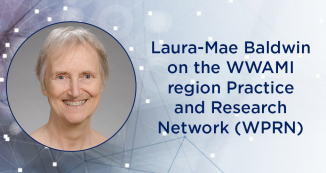
06 Dec Navigating the clinical and translational research environment with Melissa Vaught, PhD
A big part of the ITHS mission is to help research teams across Washington, Wyoming, Alaska, Montana, and Idaho (WWAMI) enhance the quality, efficiency, and impact of their work. Yet for the individual researcher, knowing what resources are available, or even what specifically you need, can present a challenge!
The broad translational research landscape
ITHS and other Clinical and Translational Science Award (CTSA) hubs, often in collaboration, bring together different types of resources to accelerate and improve translational research. Some examples include:
- Templates, forms, and other tools to facilitate your research
- Services that can support your work from proposal development to publication
- Research units and clinical research networks where you can implement your studies
- Funding opportunities to help you get a project started or finish off an analysis
- Training and professional development opportunities to help investigators and staff gain skills and knowledge to conduct translational research and advance their careers
Behind the scenes, ITHS teams study systems, experiment with processes, and develop new strategies and approaches. This work manifests not only in scholarly publications but also as new and/or improved tools and services for research. In 2017, ITHS launched the Recruitment Support Service in response to challenges in finding, enrolling, and retaining participants in clinical studies. In 2018, ITHS Biomedical Informatics released Leaf, a user-friendly, self-service tool that enables UW Medicine researchers to query electronic health system records.
Meet Melissa, the Research Navigator
 With so many resources available and under development, it can be tough to get a handle on what’s out there or where to start. That’s where I come in.
With so many resources available and under development, it can be tough to get a handle on what’s out there or where to start. That’s where I come in.
I had a longstanding interest in medicine with multiple nurses in my family. I trained as an EMT-Basic and then EMT-Intermediate as part of my local volunteer rescue squad. Meanwhile, as a college student, I was drawn to understanding the chemistry that underlies biology. Imagining that knowledge could one day help patients, I shifted to the research path.
I pursued a PhD at Vanderbilt University and studied the interactions of small molecules with lipid oxygenases, mediators of inflammation. Next I headed to Boston for postdoc work, first at the Immune Disease Institute (an affiliate of Harvard Medical School) and then at Massachusetts General Hospital. I continued dissecting inflammatory processes while also diving into cell and animal studies with new methods and pathways.
Along the way, I realized that there are lots of hurdles to doing and reporting research well. So I looked for opportunities to improve the quality and efficiency of research and its products. As a contractor at the National Center for Biotechnology Information (NCBI), I spent four years in project management and research about post-publication communication.
As I began to look for positions in Seattle, I immediately connected to the mission of ITHS. It sought to address some of the barriers I had seen and to turn research into better health for patients and communities.
When I joined in 2018, I dove into learning about what we do and how we do it, so that I would be ready to help clinical and translational researchers find what they need to get their work done.
Navigating the resources available
The primary way I fulfill this role is through work with individual researchers or research teams. Each week I hear from investigators or staff looking for a resource or assistance with some element of their project or proposal. In some cases, it’s as simple as providing an answer, sharing a link, or connecting them with an ITHS service manager or other contact at a partner or collaborating institution.
Sometimes as we discuss the question, I realize there are multiple layers involved. Occasionally, a researcher approaches the navigator with a series of questions or broader issues related to a proposal. In these cases, I dive a bit deeper, often looking over a draft of the specific aims, research strategy, or study protocol and then discussing the proposal with the investigator or team.
I look for areas where ITHS or CTSA consortium resources might be able to support your research or career development plan. I note questions about the process or flow of work proposed and how the aims are connected. If I know what funding opportunity the proposal is for, I often review the announcement and modifications and consider agency policies relevant to the funding mechanism or type of research. This can help me identify other resources that might lend strength to the application or potential alternative funding opportunities. In the end, I provide a list of suggested resources and ITHS consultations. When possible, I try to prioritize the list so that the researcher has a clear next step.
Outreach activities
Another important part of my job is by spreading the word about ITHS. I deliver presentations to departments, centers, and other programs, highlighting ways that ITHS can support their investigators and staff. ITHS also collaborates with centers throughout Seattle and WWAMI to integrate CTSA resources with their programs.
Finally, a new approach to my work is this column. I will touch on a range of topics related to developing and implementing research and career development plans and sharing your work. I will cover new policies, emerging issues, and frequently asked questions. Is there something you would like to see featured here? Let me know. Chances are, if you have a question, someone else does too!
Want to learn more about ITHS and how we can support your research/career development or your center/department? Contact the Research Navigator to schedule a consult or presentation!
Ask a Question
Ask a Question
Request Services
Request Services
Please sign in below to access this form.
Access to this form is restricted to ITHS Members. Please sign in.
Not yet an ITHS member?
Members of ITHS are part of a unique catalyst that accelerates discoveries to practice. If you haven't signed up for an ITHS membership yet, learn more and join us.







